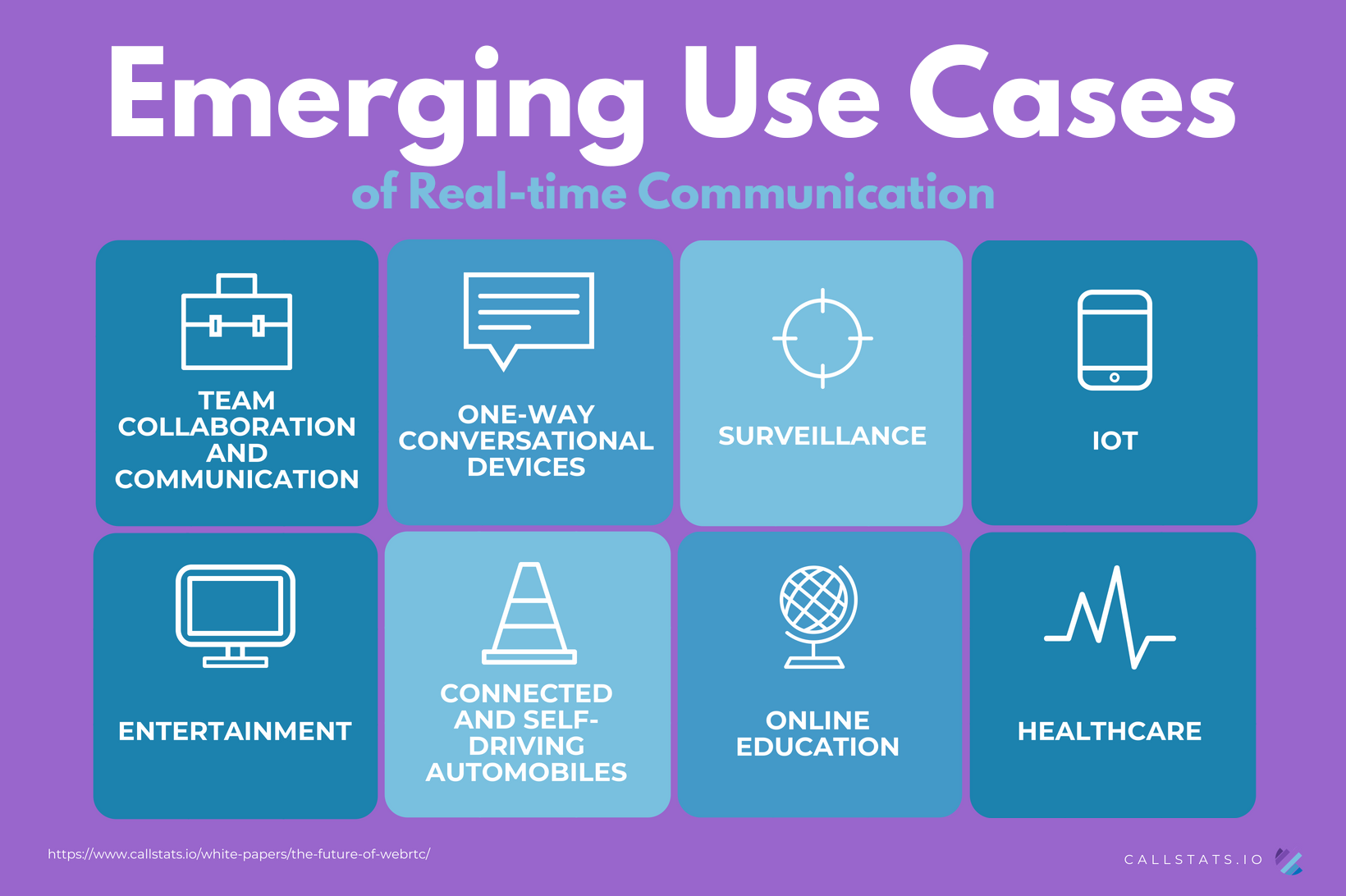Utilized by billions of users and thousands of applications, this open-source technology has finally become the new standard for real-time communications over the web.
Web real-time communications (WebRTC) is a very exciting, powerful, and highly disruptive cutting-edge technology. It leverages a set of plugin-free APIs that can be used in both desktop and mobile browsers.

WebRTC is incredibly versatile, and allows you to build “contextual communications” applications, where users connect with each other directly in your application.
A standard application connects two (or more) users in a Peer-to-Peer (P2P) connection. They connect through a Signaling Server, which is custom built for every WebRTC application and acts as a temporary intermediary to help them connect to each other.

Once the Peer Connection is established, the users are connected in a private encrypted connection, which allows them to share video, audio, and data. No intermediary servers are required at this point, which makes the connection very secure.

 Industry Verticals & Functional Horizontals
Industry Verticals & Functional Horizontals
There are interesting new ways that RTC is manifesting in business and consumer-centric applications and solutions.
Verticals: Adoption of voice and video in particular industry and application contexts, which usually translates to processes, workflows and business models. Healthcare, transportation, finance/banking, smart homes, education, gaming and e-commerce are some of the more prominent sectors.
Horizontals: Historically, the main RTC horizontals have been calls, messages, recording, contact-centres and conferencing. Now, we are seeing huge advances in voice assistants, forms of AI such as machine-vision and natural language processing, one-to-many live-streaming, asymmetric and multi-party sessions and many more.
Special Read | What You Don’t Know About Video Analytics That Could Help Businesses
 Special Features of WebRTC Communication Apps
Special Features of WebRTC Communication Apps
No Plug-ins
Web communication apps built with WebRTC don’t require additional plug-ins or add-ons. It allows sending data directly from browser to browser. Exchanging unencrypted data can cause potential eavesdroppers. End-to-End Encryption (E2EE) between the peers is enabled by default according to the WebRTC security standards.
Hence peer-to-peer connection is safe regardless of the browser.
No Camera/Microphone
WebRTC software won’t use your camera or microphone unless you enable access to them. A popup window will ask you to allow the application access.
In the case of using VoIP (Voice over Internet Protocol) systems, WebRTC based applications use WebSockets protocol over a Transport Layer Security (TLS) secured connection verified by a trusted Certificate Authority (CA). You can be sure that there are no risks of potential eavesdropping.
WebRTC security policy is focused on ensuring data transmission security whether it is to send some files or use online chatting features.
 Emerging RTC Use-Cases
Emerging RTC Use-Cases

[spacer height=”5px”][adrotate banner=”7″][spacer height=”5px”] – For General Articles
Fleet Management & Remote Operation
For example trucking/logistics companies or bus operators. Requirements for drivers to connect to dispatch units, client locations and other services such as maintenance or towing.
Specialized requirements for each category can be – video cameras to warn of low bridges, or unsecured loads.
Remote driving by human operators. E.g. operating specialist machinery on hazardous construction sites, or in hard-to-reach areas.
The costs and time of sending a human driver to a distant site, for an hour controlling a crane or digger, could potentially be reduced if they can just drive it from a central facility. This concept is already common for the remote-control of military drones.
Emergency Communications & Roadside Assistance
Emergency-services vehicles are likely to be particularly well-equipped for RTC applications.
Police cars or ambulances attending the scene of an accident receiving video footage from bystanders’ phones, in advance of their arrival. They may be able to advise on first-aid or safety/security measures interactively as well.
Other applications include direct voice connections to roadside repair, or engineering assistance/customer service for the vehicle manufacturer. While some communications functions will remain anchored in the driver’s or passengers’ own phones, others will relate more to the vehicle itself.
Cameras inside vehicle systems to aid remote diagnosis of problems. Audio analysis might go beyond “voice”, to sampling mechanical sounds as well.
Online Education
For decades, people have used audio tools for remote-learning. The arrival of streaming, and real-time video communications and mobile apps, has led to more sophisticated techniques online. This has also mirrored the rise of distributed online learning courses.

While a lot of online education is about documents, pre-recorded lectures, tests etc, there is also a need for RTC interaction.
Teachers need to speak to, or listen to, pupils directly, especially for 1-1 tuition in areas like personal coaching, or music or language tuition.
Related to education is the growth of online “expert marketplaces”. While some is adequately served by normal mass-market conferencing or voice/video calling tools, other instances may need embedding of RTC directly into specific apps. Translation, interpretation and visual functions like “personal shopping” or stylist advice are good examples.

Another related area is around distributed customer support for companies, where it is possible to have networks of part-time advisers on particular products or services.
A “gig economy” networks allow people to work via mobile apps – with associated rating and recommendation schemes. Imagine being able to consult an expert (or a fellow customer) on choice of furniture or home-appliances, perhaps for a small fee, before a major purchase.
A “next-gen version of TripAdvisor” could also use RTC to help people gauge whether reviews are genuine.
 Summary
Summary
WebRTC is a highly disruptive standard that involves the orchestration of many technologies and protocols. Both desktop and mobile-based chat applications are fully achievable by leveraging WebRTC.
With inputs from : callstats.io
[spacer height=”5px”][adrotate banner=”2″][spacer height=”5px”]









